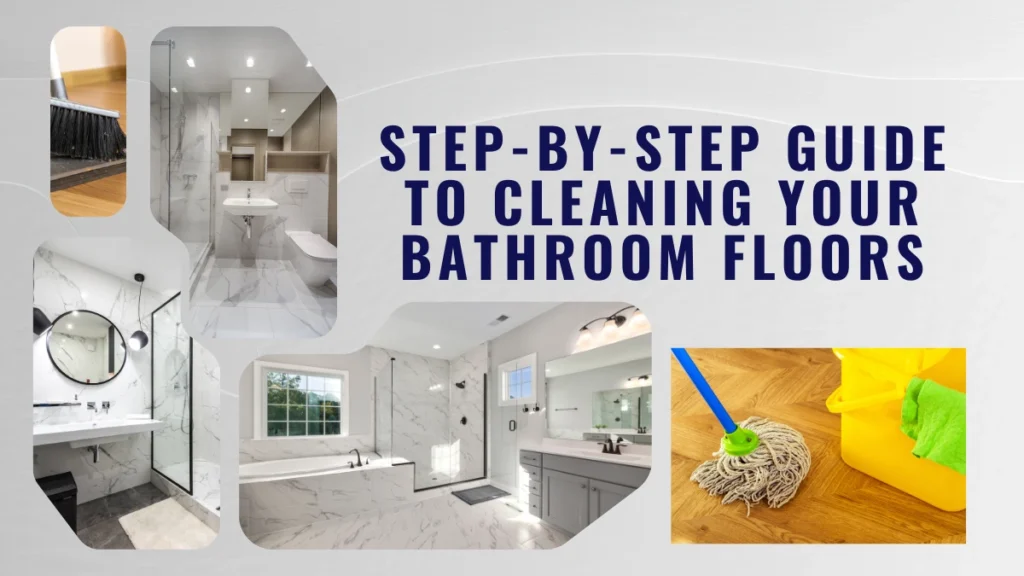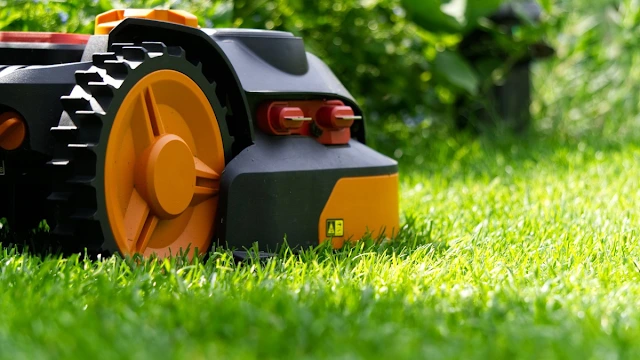
Cleaning your bathroom floor is essential for keeping your home fresh and hygienic. Bathrooms can quickly accumulate dirt, soap scum, and germs. If you want to ensure your bathroom is clean and inviting, it’s important to focus on the floor. This guide will walk you through the process step-by-step, using easy-to-understand language.
Why Cleaning Your Bathroom Floor Matters
Bathroom floors collect a lot of grime. From hair to water stains, bacteria can grow if not cleaned regularly. These germs can affect your health, especially if you have small children or pets. Cleaning your bathroom floors keeps bacteria away and helps prevent mold and mildew buildup. Regular cleaning also extends the life of your bathroom flooring, especially if it’s made of tile, vinyl, or laminate.
Step 1: Gather the Right Tools
Before starting, you need to have all your cleaning supplies ready. Having everything in one place will save time and effort.
| Items | Description |
| Broom or vacuum | Choose a broom with soft bristles or a vacuum designed for hard floors to pick up dirt and hair effectively. |
| Mop | A mop with a washable head is easier to clean and ensures you’re not spreading dirt around. |
| Bucket | A sturdy bucket is essential for mixing your cleaning solution and carrying water. |
| Bathroom cleaner | Use a mild bathroom cleaner or create a natural solution with water and vinegar for safe, effective cleaning. |
| Scrub brush | A stiff-bristle scrub brush helps remove tough stains and grime in corners and around fixtures. |
| Old towels or rags | Keep a set of old towels handy to quickly dry the floor and avoid streaks. |
| Gloves | Wear gloves to shield your hands from harsh cleaners and protect your skin. |
These tools help ensure you get a deep clean. You’ll want to make sure you choose a cleaner suitable for your floor type. For example, avoid using acidic cleaners on marble or natural stone.
Step 2: Clear the Floor
Start by clearing everything off your bathroom floor. Remove trash cans, laundry baskets, bath mats, and any other items. This gives you a clean space to work on.Check for any small objects that may have fallen under cabinets or in corners. Clearing the floor first makes the cleaning process more efficient.
Step 3: Sweep or Vacuum the Floor
Once your floor is clear, start by sweeping or vacuuming the surface. Dust, hair, and loose dirt should be removed before you mop. This prevents dirt from sticking to the wet floor later.
To sweep:
– Use a broom to sweep the entire floor.
– Pay attention to the corners and edges where dust gathers.
To vacuum:
– Set your vacuum to hard floor mode.
– Go over the bathroom floor, making sure to reach under the sink and around the toilet.
Sweeping or vacuuming ensures that the floor is free of loose debris, making the mopping process easier and more effective.
Step 4: Choose the Right Cleaner
The next step is choosing a suitable cleaner for your bathroom floor. The type of cleaner depends on your floor material.
For tile floors:
– Use a tile-safe cleaner or make a DIY solution of equal parts water and white vinegar.
– Avoid harsh chemicals, as they can damage grout over time.
For vinyl floors:
– Use a mild cleaner. A mixture of water and a few drops of dish soap works well.
For stone floors:
– Use a pH-neutral cleaner. Do not use acidic cleaners like vinegar on stone.
If you prefer natural cleaners, vinegar mixed with warm water is effective for tile and vinyl. However, always test a small area first to ensure the cleaner won’t damage your floor.
Step 5: Mop the Floor
Now it’s time to mop. The way you mop will depend on your floor type, but the basic technique is the same.
1. Fill the bucket with warm water and your cleaner.
2. Dip the mop into the bucket and wring it out so it’s damp but not soaking wet.
3. Start mopping at the farthest corner from the door and work your way toward the exit.
4. Use a figure-eight motion to mop the floor efficiently. Make sure to clean around the base of the toilet and under cabinets.
If the water gets dirty, replace it with fresh water and cleaner. This prevents spreading dirt around. For sticky spots or tough stains, use a scrub brush to loosen the dirt. Once you’ve scrubbed, mop over the area again to pick up the residue.
Step 6: Dry the Floor
After mopping, you want to make sure the floor is completely dry. This helps prevent slipping and also keeps water from damaging the grout or flooring.
To dry:
– Use old towels or rags to dry the floor by hand.
– For tile or vinyl floors, you can allow the air to dry them, but be sure to wipe up any puddles.
If you’re in a hurry, turn on a fan or open a window to speed up the drying process.
Step 7: Clean the Grout (Optional)
If you have tile floors, grout cleaning is an important step. Grout lines can hold onto dirt, making the bathroom look less clean.
Here’s how to clean grout:
– Make a paste of baking soda and water.
– Apply it to the grout lines with an old toothbrush or small scrub brush.
– Scrub the grout, focusing on any discolored spots.
– Rinse the area with water and wipe it down with a clean cloth.
For tough stains, you can let the baking soda paste sit for 5-10 minutes before scrubbing. This will help lift stains more easily.
Step 8: Replace Bathroom Items
Once your floor is clean and dry, it’s time to put everything back. Shake out any bath mats before placing them back on the floor. This prevents dust or hair from getting on the freshly cleaned surface.
Check your trash can, laundry basket, and any other items for dirt or stains. Wipe them down before putting them back to maintain the cleanliness of your bathroom.
Tips for Keeping Your Bathroom Floor Clean
Mop weekly: This keeps grime from building up and reduces the need for deep cleaning.
Clean spills immediately: Water or other liquids can stain the floor if left too long.
Use a bath mat: A bath mat helps absorb water and reduces the chances of slippery floors.
Ventilate the bathroom: Keep the bathroom well-ventilated to reduce moisture, which can cause mold and mildew.
FAQs: Cleaning Bathroom Floors
1. How often should I clean my bathroom floors?
You should clean your bathroom floors at least once a week to maintain cleanliness and prevent buildup of dirt and bacteria.
2. Can I use bleach to clean my bathroom floors?
Yes, but only on tile floors. Avoid using bleach on vinyl, laminate, or stone as it can damage the surface.
3. What’s the best way to remove stains from grout?
A paste made from baking soda and water works well. Scrub it into the grout with a toothbrush and rinse it off.
4. Can I use vinegar on all bathroom floor types?
No, vinegar is safe for tile and vinyl but should not be used on natural stone floors like marble or granite.
5. Do I need to dry the floor after mopping?
Yes, drying the floor helps prevent slipping and protects the floor from water damage, especially in grout lines.
Cleaning your bathroom floors doesn’t have to be difficult. By following these steps, you can keep them looking fresh, prevent bacteria, and protect the material from damage. A clean bathroom floor makes your home feel more welcoming and comfortable. Regular maintenance is key to ensuring a sparkling bathroom year-round.
Read More
https://cleaningview.ca/how-to-remove-hard-water-stains-from-your-bathroom/
Important: The information provided here in the post is for general informational purposes only. It should not be taken as professional or any other type of advice. Always seek the advice of a qualified professional before implementing this information on your own. Thank you!
Add CleaningView To Your Google News Feed


